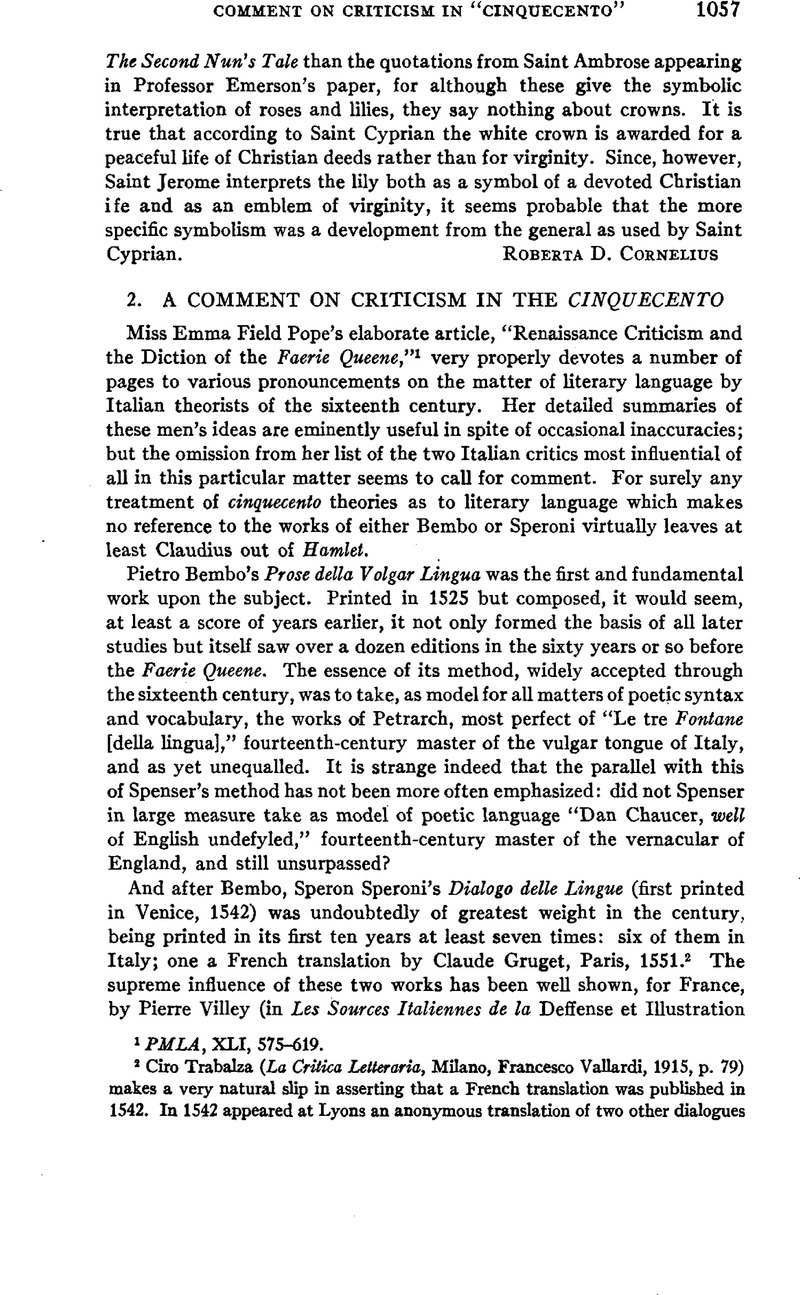Article contents
A Comment on Criticism in the Cinquecento
Published online by Cambridge University Press: 14 December 2021
Abstract

- Type
- Comment And Criticism
- Information
- Copyright
- Copyright © Modern Language Association of America, 1927
References
1 PMLA, XLI, 575–619.
2 Ciro Trabalza (La Crilica Letteraria, Milano, Francesco Vallardi, 1915, p. 79) makes a very natural slip in asserting that a French translation was published in 1542. In 1542 appeared at Lyons an anonymous translation of two other dialogues of Speroni; the Dialogo dette Lingue, however, was not printed before Grunet's version of 1551.
3 I note that in Ruscelli's ponderous Commentarii della Lingua Italiana Venetia, Zenaro, 1581, Miss Pope might have found more weighty matter on her subject than in his dedicatory letter for Minturno's Rime, which alone she quotes (and unhappily much mistranslates).
4 I. e. the poet in general (or, possibly, Dante). Certainly not Boccaccio, who followed Petrarch, and (as Muzio carefully suggests both in this passage and in the Battaglie) gathered extremely few “tares”.
- 1
- Cited by




